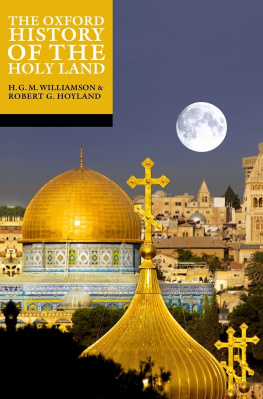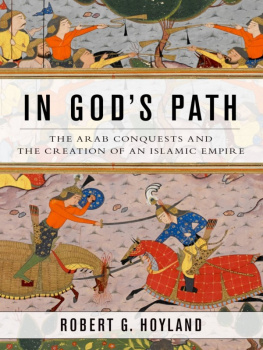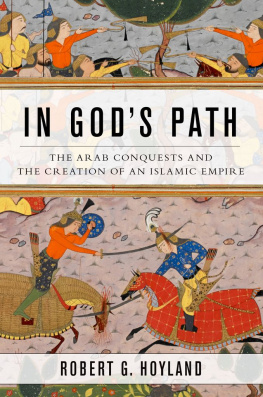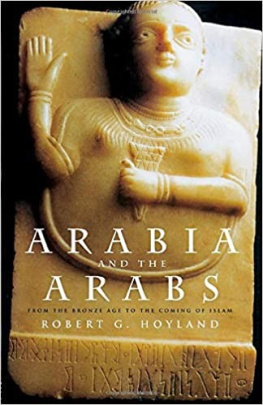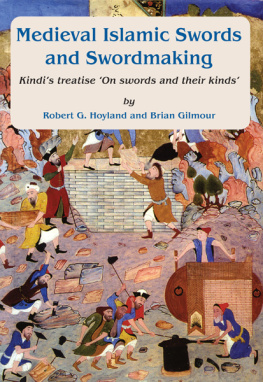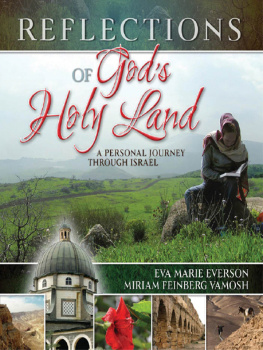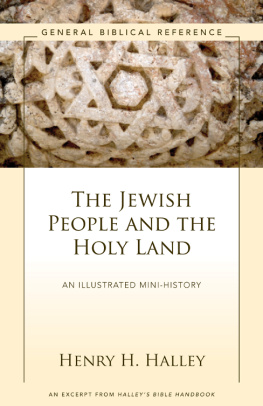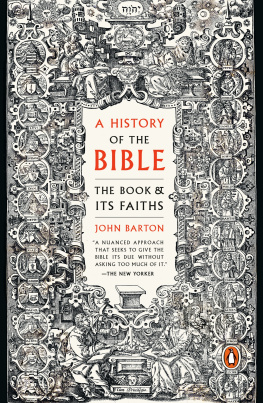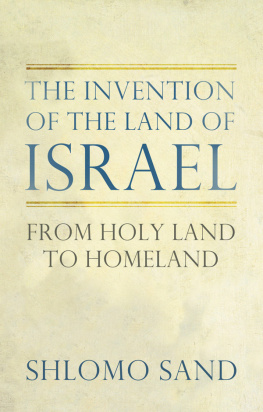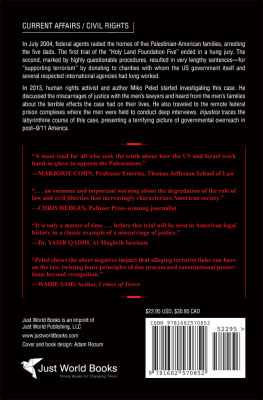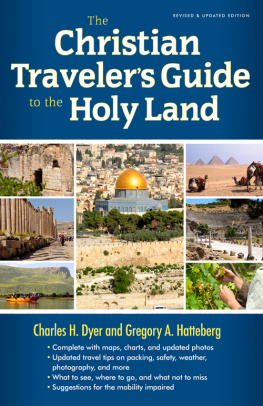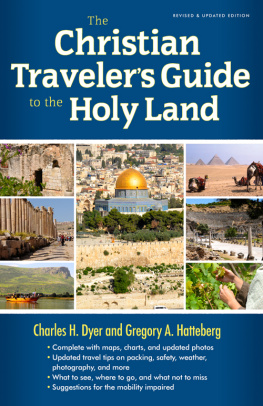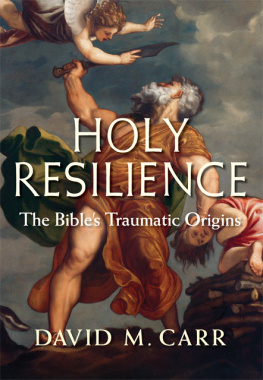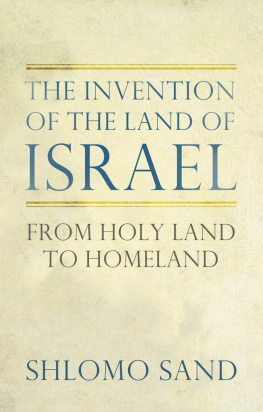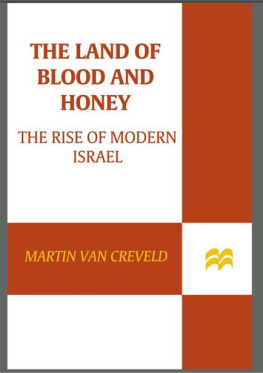The Oxford History Of the Holy Land
H. G. M. Williamson was until recently Regius Professor of Hebrew at Oxford University. His expertise in the texts of the Old Testament is complemented by his active participation in the archaeology of the biblical period in the Holy Land.
Robert G. Hoyland is Professor of Late Antique and Early Islamic Middle Eastern History at New York University's Institute for the Study of the Ancient World. His books include Arabia and the Arabs (Routledge, 2001) and In God's Path (OUP, 2015). He has conducted fieldwork both in Israel/Palestine and in neighbouring regions of the Middle East.
The fifteen historians who contributed to The Oxford History of the Holy Land are all distinguished authorities in their field. They are:
john j. collins , Yale Divinity School
avraham faust , Bar-Ilan University
robert fisk , writer and journalist
lester l. grabbe , University of Hull
richard s. hess , Denver Seminary
carole hillenbrand , University of Edinburgh
robert g. hoyland , New York University
konstantin klein , University of Amsterdam
andr lemaire , cole Pratique des Hautes tudes
milka levy-rubin , Hebrew University of Jerusalem
nimrod luz , Kinneret College, Galilee
denys pringle , Cardiff University
adam silverstein , Hebrew University of Jerusalem
peter walker , Trinity School for Ministry
h. g. m. williamson , University of Oxford

Great Clarendon Street, Oxford, OX2 6DP, United Kingdom
Oxford University Press is a department of the University of Oxford. It furthers the University's objective of excellence in research, scholarship, and education by publishing worldwide. Oxford is a registered trade mark of Oxford University Press in the UK and in certain other countries
Oxford University Press 2023
The text of this edition was published in The Oxford Illustrated History of the Holy Land in 2018
The moral rights of the authors have been asserted
First Edition published in 2018 First published in paperback 2022
Impression: 1
All rights reserved. No part of this publication may be reproduced, stored in a retrieval system, or transmitted, in any form or by any means, without the prior permission in writing of Oxford University Press, or as expressly permitted by law, by licence or under terms agreed with the appropriate reprographics rights organization. Enquiries concerning reproduction outside the scope of the above should be sent to the Rights Department, Oxford University Press, at the address above
You must not circulate this work in any other form and you must impose this same condition on any acquirer
Published in the United States of America by Oxford University Press
198 Madison Avenue, New York, NY 10016, United States of America
British Library Cataloguing in Publication Data
Data available
Library of Congress Control Number: 2022946823
ISBN 9780192886866
ebook ISBN 9780192886873
DOI: 10.1093/oso/9780192886866.001.0001
Printed and bound by
CPI Group (UK) Ltd, Croydon, CR0 4YY
Praise for The Oxford History of the Holy Land
Three great world faiths have invested so many hopes and passions in one relatively small part of the eastern Mediterranean seaboard and its hinterland, that there are risks even in calling it by a single name. This collective study of the God-trodden land is a richly informative, reliable, and sane guide to its troubled history: one valuable contribution to crafting it a more peaceful present and future.
Diarmaid MacCulloch, University of Oxford
This book is a feast for lovers of the Holy Land. Serious and scholarly with substantial bibliography
Bible Lands, Winter 2019
The Oxford History of the Holy Land fills a valuable place on the shelf of anyone interested in a more general overview of the significance of the Holy Land.The authors do an admirable job of giving a modern academic historical overview that reconciles modern historical perspectives with traditional views informed by different religious faiths.'
Neil Xavier O'Donoghue, Irish Theological Quarterly
One-stop shopping for tourists, graduate students, and Sunday school teachers seeking reliable historical information.'
Kirkus Reviews
This is a remarkably elegant book, with its physical elegance matched by a corresponding elegance of content provided by noted and highly respected contemporary scholars in the archaeology and history of the biblical period of the Holy Land.'
Dale E. Luffman, Association of Mormon Letters
Contents
The Birth of Israel
Avraham Faust
Iron Age: Tribes to Monarchy
Lester L. Grabbe
Israel and Judah, c.931587 bce
Andr Lemaire
Babylonian Exile and Restoration, 587325 bce
H. G. M. Williamson
The Hellenistic and Roman Era
John J. Collins
A Christian Holy Land, 284638 ce
Konstantin Klein
The Coming of Islam
Milka Levy-Rubin
The Holy Land in the Crusader and Ayyubid Periods, 10991250
Carole Hillenbrand
The Holy Land from the Mamluk Sultanate to the Ottoman Empire, 12601799
Nimrod Luz
From Napoleon to Allenby: The Holy Land and the Wider Middle East
Robert Fisk
Pilgrimage
Peter Walker with Robert G. Hoyland
Sacred Spaces and Holy Places
Richard S. Hess and Denys Pringle
Scripture and the Holy Land
Adam Silverstein
In an aide-memoire following the First World War, the British Prime Minister David Lloyd George wrote to his French opposite number Georges Clmenceau that Palestine was to be defined in accordance with its ancient boundaries of Dan to Beersheba. Lloyd George had been steeped in the Bible from his childhood, so that it is understandable, if politically astonishing, that he should have allowed his instinctive memory to influence his approach to modern political realities.
Different names and geographical definitions bedevil the history of this part of the world and none can do justice to the sweep of what we have set out to describe in the present volume. Precisely for that reason we have deliberately chosen the title Holy Land, a familiar name which has never featured on any map worth its salt. It serves to indicate that our intention here is far from politicaland that is one good reason why we have called a halt in our historical survey at just the point where Lloyd George was clarifying his thoughts on the post-war settlement. But just as we have stopped short of the modern era, so we have not included anything about the thousands of years of occupation which preceded the biblical period. The Carmel Caves, for instance, have yielded evidence of some of the earliest human occupation known worldwide, a testimony to the geographical centrality of the region as a link between Africa and Europe. Jericho has often been called the words first city, and archaeology has revealed much about human occupation throughout the millennia since then.
The Holy Land, however, conjures up an approach to territory which is more cultural, and specifically religious, than political, however closely intertwined the two were until relatively recently. This modest strip of land saw the birth of two world religions, Judaism and Christianity, and was of central significance to a third from its earliest days, Islam. It is sobering to recall that Jerusalem has been taken by military force by adherents of each of these three religions; no other city anywhere is of such central religious importance to each. It was therefore inevitable that we should begin our history with Abraham, whom each religion reveres. It is worth reflecting that according to our texts he owned no property in this land apart from a tomb, however, and that he had only limited engagement with the resident population.

